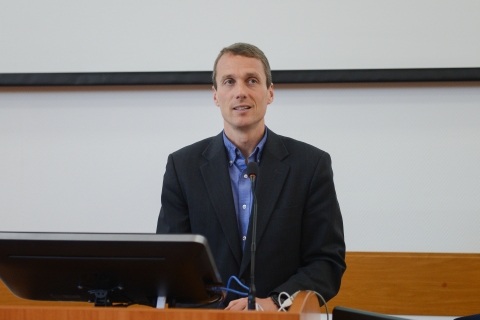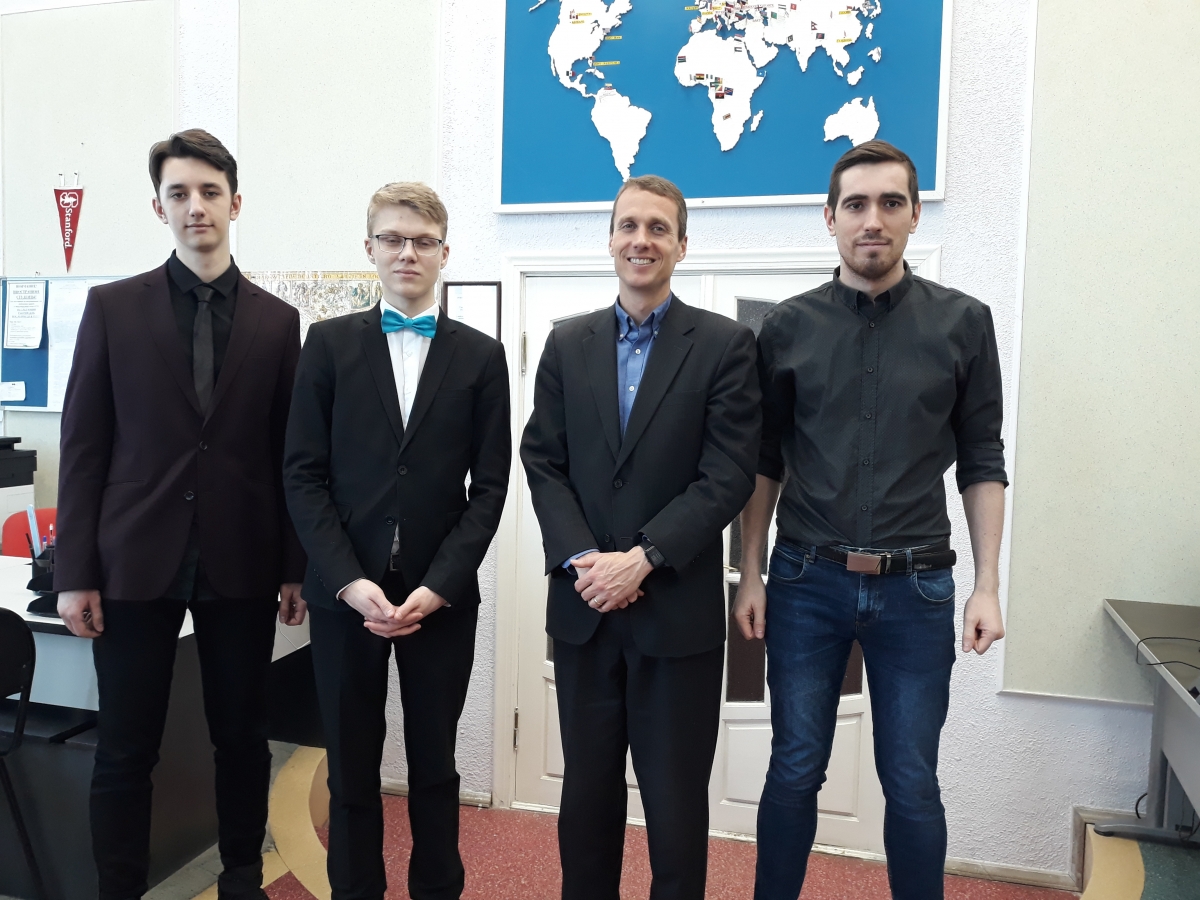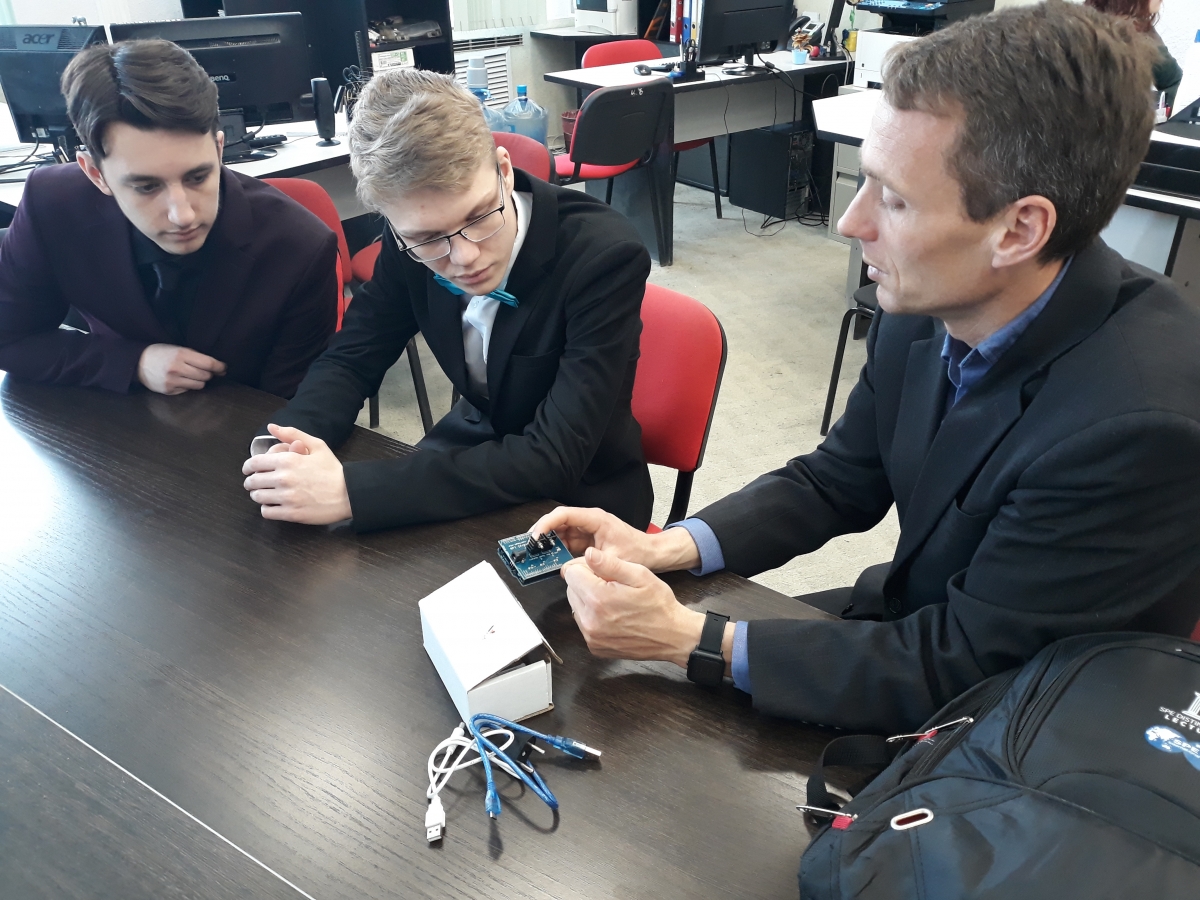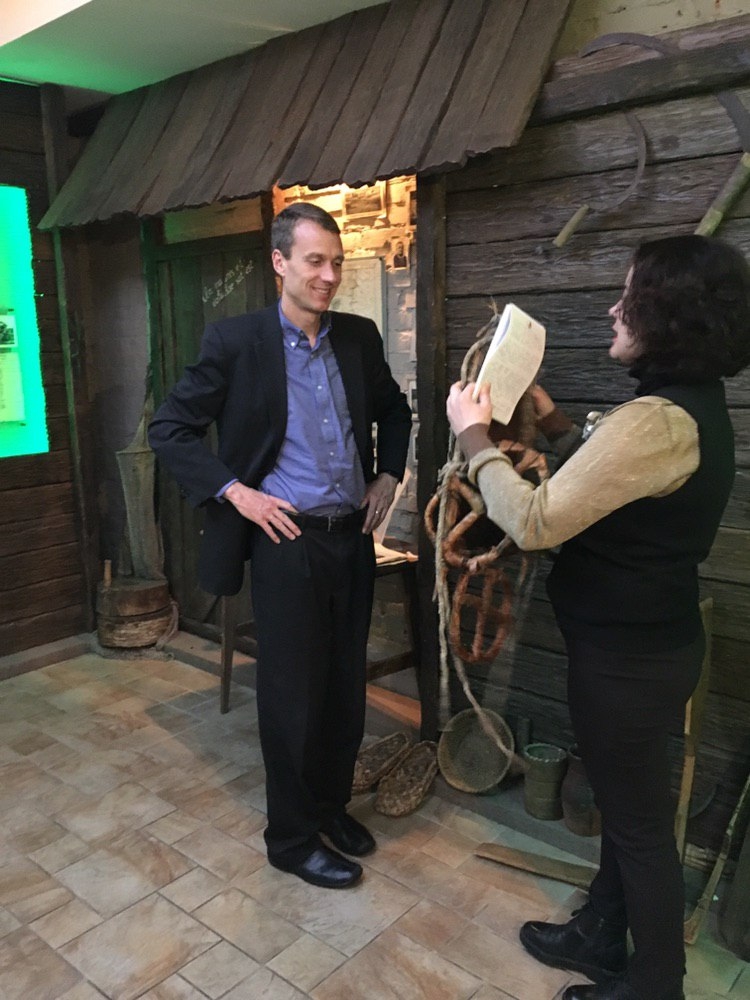Ru En
Visit of SPE lecturer Hedengren John David
Within the framework of cooperation between Ukhta University and the world society of petroleum engineers SPE, guest lectures of the world's leading experts in various fields of the oil and gas industry are organized on a regular basis. On March 25, 2019, an open lecture was held by USA SPE lecturer Hedengren John David at USTU. The topic of the lecture: "Drilling automation and downhole monitoring with physical models."
In his lecture, John Hedengren, an associate professor at Brigham Young University in Provo, Utah, talked about how automation transforms many aspects of our lives and energy in general. Along with automation, you must keep track of conditions that cannot be measured directly. There are many benefits of automation, including health, safety and environmental factors. Automation responds faster to problems with fast and small fixes compared to large fixes or costly corrective actions. Economic benefits are achieved by working more closely with constraints and reducing drilling time (especially in difficult market conditions). Mr Hedengren shared the latest advances in monitoring drilling conditions in the well using machine learning and “digital twins”.
At the USTU Hedengren, John David also visited the proving ground of the Mining and Petroleum College and the USTU museum, for which he was given a tour of the nominal audiences of the main building of the university. On Monday, March 25, the SPE lecturer left Ukhta. In his route through Russia - a few more cities, where he will deliver his lecture.
Hedengren John David is an outstanding lecturer at the Society of Petroleum Engineers. John is an assistant professor of chemical engineering at Brigham Young University. He received a Ph.D. in chemistry from the University of Texas at Austin. Previously, he developed the APMonitor Optimization Suite and worked at ExxonMobil on improved process management. His main research focuses on accelerating drilling automation technology. Other research interests include fiber optic monitoring, tank optimization and unmanned aerial systems. In addition, he is the head of the Center for unmanned aircraft systems, applying automation and optimization technologies in the energy infrastructure.










